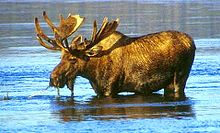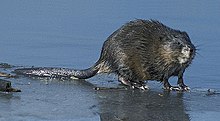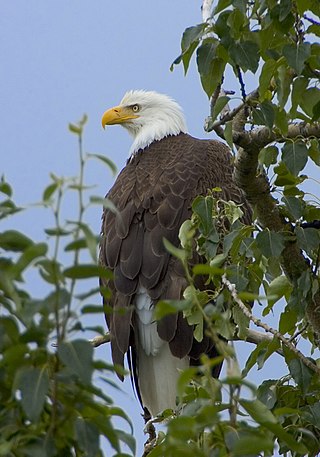Mammals
Even-toed ungulates
Deer
The deer of Maine include the moose, and the white-tailed deer. Caribou lived in Maine in the past.

Whales
Large baleen whales
The large baleen whales of Maine include the blue whale, Bryde's whale, finback whale, humpback whale, minke whale, north atlantic right whale, and the sei whale
Large toothed whales
The large toothed whales of Maine include the beluga, beaked whale, false killer whale, grampus, killer whale, northern bottlenose whale, pygmy sperm whale, short-finned pilot whale, sperm whale, and the long-finned pilot whale.
Dolphins and porpoises
Rodents
The rodents of Maine include the North American deermouse, White-footed mouse, meadow jumping mouse, woodland jumping mouse, meadow vole, southern red-backed vole, rock vole, woodland vole, southern bog lemming, northern bog lemming, northern flying squirrel, southern flying squirrel, eastern gray squirrel, American red squirrel and the American beaver.
Lagomorphs
Rabbits
The rabbits of Maine include the New England cottontail, and the eastern cottontail.
Hares
The hares of Maine include the snowshoe hare.
Carnivores

The carnivores of Maine include the red fox, gray fox, bobcat, Canadian lynx, coyote, [1] American black bear and the extirpated gray wolf and eastern cougar.
Bats
The bats of Maine include the eastern pipistrelle, big brown bat, little brown bat, eastern small-footed myotis, northern myotis, eastern red bat, hoary bat, and the silver-haired bat.
Other small mammals
Other small mammals of Maine include species of several different families. These include the following: hairy-tailed mole, star-nosed mole, water shrew, smoky shrew, long-tailed shrew, pygmy shrew, cinereus shrew, and the northern short-tailed shrew.
Mustelids
The various species of weasels include: northern river otter, American mink, long-tailed weasel, ermine or short-tailed weasel, fisher (in New England is known as a fisher cat), and the American marten (Known as pine marten in some areas of New England even though the pine marten is a separate species.).
Other mammals

Other mammals include the red squirrel, eastern gray squirrel, eastern chipmunk, woodchuck, northern raccoon, Virginia opossum, striped skunk, North American porcupine, and the common muskrat.




